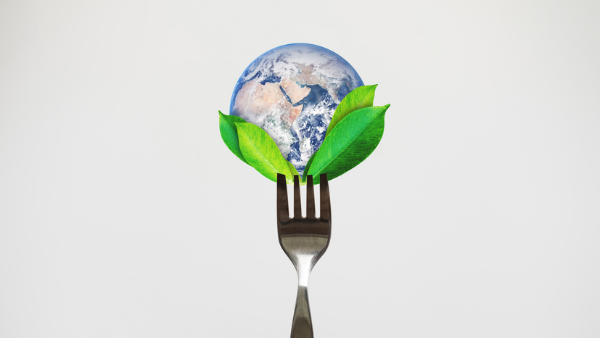Author
Now, more than ever, we recognise that sustainability is not only key to our prosperity but our very existence. The impact that our species is having on the planet is not only testing our natural world but our own resilience. In a series of reports set to highlight the effect of nature loss on business, The World Economic Forum has issued its second Nature Economy Report, “The Future of Nature and Business”. The report states the
“…economic, humanitarian and social fall-out from the COVID-19 pandemic crisis is far more severe than the 2008-09 global financial crisis.”
Further, that
“…it is imperative to also recognise this opportunity to reset humanity’s relationship with nature.”
The World Economic Forum’s first New Nature Economy Report, Nature Rising Risk, recorded that
“$44 trillion of economic value generation — over half the world’s GDP, is potentially at risk as a result of the dependency of business on nature and its services.”
Second Report The second Nature Economy Report records that 80% of biodiversity loss is driven by three areas; first, food, land and ocean use; secondly extractives and energy; and thirdly, infrastructure and the built environment. It calls for a fundamental transformation of these areas. In relation to food, land and ocean use, the report recommends six transitions, which it records could create around $3.6trillion of additional revenue or costs savings per annum and create almost 200 million jobs by 2030 globally. These are:
- Reducing the footprint of agriculture and fishing on ecosystems and restoring degraded ecosystems using fiscal incentives;
- A shift towards productive and regenerative agriculture: a combination of traditional farming, advanced precision technologies and bio-based inputs to increase biodiversity and enrich soils, whilst improving yields;
- Sustainable managed fisheries through upholding quotas and limiting fishing zones as well as sustainable aquaculture;
- Transition to sustainable management of forests;
- A requirement for “plant-compatible consumption” to move away from overconsumption of resource intensive foods which would also address consumer waste; and
- “Transparent and Sustainable Supply Chains” by integrating transparency, traceability and increased collaboration in supply chains.
The report explores the approach of regenerative agriculture in
“progressively reducing chemical inputs, using more crop rotation, building up soil health and making their production mix more biodiverse.”
It also recognises the key role that technology will play, as well as stressing the importance of repurposing subsidies.
It is an incredibly ambitious report, so where does the UK stack up on its plans for a green recovery and what does this mean for the agriculture sector?
Green recovery
On 18 November the Prime Minister announced a 10 point plan for a “Green Recovery”. The aspiration of Government policy, designed to tackle the current economic crises, is to make sustainability the cornerstone of future growth. Protecting the natural environment was 1 of the 10 points and describes an ambition to harness nature’s ability to absorb carbon by planting 30,000 hectares of trees a year by 2025 and rewilding 30,000 football pitches worth of countryside.
A joint announcement by DEFRA, Natural England, the Environment Agency and the Forestry Commission confirmed that 10 “Landscape Recovery Projects” will be established over the next four years through the Environmental Land Management Scheme (ELMS) introduced by the Agriculture Act 2020, which passed into law on 11 November 2020. The announcement explained that ELMS will be
“centred around support aimed at incentivising sustainable farming practices, creating habitats for nature recover and supporting the establishment of new woodland and other ecosystem services to help tackle climate change.”
ELMS
The new ELMS seeks to reward farmers and land managers for practices which promote (amongst other things) improved air and water quality, protecting and improving soil health, management of land, water and livestock that improves the environment or mitigates or adapts to climate change and encourages thriving wildlife.
On 30 November 2020, DEFRA published a guide setting out the “Path to Sustainable Farming”. The guide explains the core elements of ELMS as:
- The Sustainable Farming Incentive which “will support sustainable approaches to farm husbandry to deliver for the environment, such as actions to improve soil health, enhance hedgerows and promote integrated pest management”;
- Local Nature Recovery focussing on creating, managing and restoring habitats such as woodland, wetlands, freshwater, peatland, heathland, species-rich grassland, and coastal habitat; and
- Landscape Recovery which will focus on largescale forest and woodland creation, restoration and improvement; ecosystem restoration; peatland restoration; and the creation and restoration of coastal habitats such as wetlands and salt marsh.
The guide also describes how DEFRA will launch a new scheme for industry-led innovation, research and development, recognising the role that technology and innovation will play in tackling the pressures on the agriculture sector.
Further detail regarding how the Government’s Recovery Plan and the Agriculture Act 2020 will operate in practice is expected to follow. That detail is essential in order to map out how the ambitious aspirations, which are set out, will come to fruition. What is clear, is that there must continue to be an acknowledgment and furtherance of our understanding of the dependency between business and nature in order to harness the economic potential of the environment.

